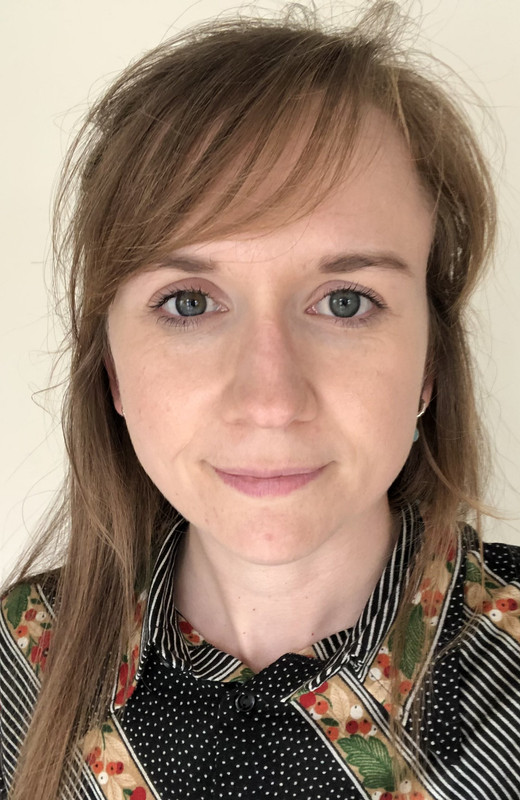Staff profile

| Affiliation | Telephone |
|---|---|
| Assistant Professor in the School of Modern Languages and Cultures | +44 (0) 191 33 42457 |
Biography
I am Assistant Professor in German in the School of Modern Languages and Cultures. I took up this position in 2023 after arriving in Durham as as a Leverhulme Early Career Fellow in 2019. In 2018 I was awarded my PhD at the University of Cambridge, funded by the Wolfson Foundation, and I have held postdoctoral scholarships at Cambridge and at the HU Berlin.
My research interests lie in German, French and English literary and visual cultures of the nineteenth century. I am currently writing a book on writers' doodles from the nineteenth century to the present day, a project that has involved diversions into several other unsanctioned and marginal forms of visual art — sketches, squiggles, blots, graffiti, arabesques. This work is rooted in a longstanding interest in the German writer E. T. A. Hoffmann.
My research is broadly motivated by a concern for how scenes of writing and reading are contoured by the senses, particularly vision and touch. This has inspired work on embodied theories of representation and imitation; on writing’s intimate affinity to drawing; on psychoanalytic approaches to literature; and on the ways in which we read, fondle, copy, de-face, and mis-read texts. My first book, Romanticism, Realism, and the Lines of Mimesis (EUP 2024) gives an account of mimesis between Romanticism and Realism, charted across a series of capricious lines (arabesques, facial contours, crosses) in works by E. T. A. Hoffmann and Honoré de Balzac.
Esteem Indicators
- 2018: MHRA Postdoctoral Research Scholarship: University of Cambridge
- 2015: Katherine Mansfield Society Essay Prize: Competition Winner
- 2014: Society of Dix-Neuviémistes Postgraduate Paper Prize: Competition Winner
Publications
Authored book
- Romanticism, Realism, and the Lines of MimesisDickson, P. (in press). Romanticism, Realism, and the Lines of Mimesis. Edinburgh University Press.
Chapter in book
- Interior Matters: Secrecy and Hunger in Katherine Mansfield’s “Bliss”Dickson, P. (2016). Interior Matters: Secrecy and Hunger in Katherine Mansfield’s “Bliss”. In Katherine Mansfield and Psychology (pp. 11-22). Edinburgh University Press. https://doi.org/10.1515/9781474417556-004
Journal Article
- Chamisso's Bounding LinesDickson, P. (2025). Chamisso’s Bounding Lines. Oxford German Studies, 54(1), 112-129. https://doi.org/10.1080/00787191.2025.2462461
- Bounded Narratives: Form, Containment, and Border Crossing in Nineteenth-Century German LiteratureDickson, P., & Nitschke, C. (2025). Bounded Narratives: Form, Containment, and Border Crossing in Nineteenth-Century German Literature. Oxford German Studies, 54(1), 1-13. https://doi.org/10.1080/00787191.2025.2462446
- Fantasies of Home: Heimat in E. T. A. Hoffmann's 'Haimatochare'Dickson, P. (2023). Fantasies of Home: Heimat in E. T. A. Hoffmann’s ’Haimatochare’. German Quarterly, 96(1), 6-21. https://doi.org/10.1111/gequ.12318
- Hoffmann’s Signature DoodlesDickson, P. (2022). Hoffmann’s Signature Doodles. Literatur für Leser:Innen, 45(1), 77-91. https://doi.org/10.3726/lfl.2022.01.06
- Tracing Squiggles: Laurence Sterne, E. T. A. Hoffmann, and Honoré de BalzacDickson, P. (2020). Tracing Squiggles: Laurence Sterne, E. T. A. Hoffmann, and Honoré de Balzac. Comparative Literature, 72(1), 53-67. https://doi.org/10.1215/00104124-7909972
- 'Schlemihl for ever': two portraits by E. T. A. HoffmannDickson, P. (2020). ’Schlemihl for ever’: two portraits by E. T. A. Hoffmann. Nineteenth-Century Contexts, 42(3). https://doi.org/10.1080/08905495.2020.1773168
- "The Loosest Sketch in Nature...": Balzac, Sterne, et l'esquisse littéraireDickson, P. (2019). "The Loosest Sketch in Nature...": Balzac, Sterne, et l’esquisse littéraire. L’Année Balzacienne, 20(1), 195-209.
- Figures of Feeling in Honoré de Balzac’s La Peau de chagrinDickson, P. (2017). Figures of Feeling in Honoré de Balzac’s La Peau de chagrin. Nineteenth-Century French Studies, 45(3-4), 149-162. https://doi.org/10.1353/ncf.2017.0002
Newspaper/Magazine Article
- Anthropomorphic Carrot: Tales from HoffmannDickson, P. (2025, January 23). Anthropomorphic Carrot: Tales from Hoffmann. London Review of Books, 47(1).
Other (Digital/Visual Media)
- Doodle Nation: Notes on Distracted DrawingDickson, P. (2024, July 17). Doodle Nation: Notes on Distracted Drawing. The Paris Review [Blog post].
- E. T. A. Hoffmanns Rezeption in GrossbritannienDickson, P. (2020). E. T. A. Hoffmanns Rezeption in Grossbritannien [Website content]. E.T.A. Hoffmann Portal.
- Grave duty, unbridled loveDickson, P. (2018, July 20). Grave duty, unbridled love [Book Review; Times Literary Supplement].
Other (Print)
- Pease Porridge, Cold: What to eat at the North PoleDickson, P. (2015). Pease Porridge, Cold: What to eat at the North Pole [Cabinet Magazine]. Cabinet Magazine.

